What’s Behind Update 1 in V-Ray for SketchUp?
In this article, we will take a look at the major new features in the first update of V-Ray Next for SketchUp, including tips and tricks.
Ten years ago, Icons of Denmark established itself as a distributor of Danish furniture for the U.K. market.
Through their unique market-led approach, they’re bringing Danish design to the modern office…one sleek sofa at a time.
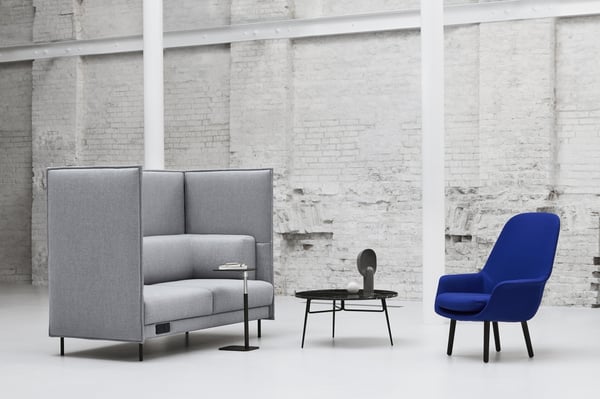
Icons of Denmark started as quite a traditional furniture agency, representing Danish furniture brands for the U.K. market. We’ve always had a hands-on approach to representing furniture and pride ourselves on being very knowledgeable about our products. We have a high level of technical know-how for how the furniture can be used, what sorts of applications the furniture has, and certain activities in an office where the furniture has relevance.
That approach led us into product design and manufacturing. We’ve taken what we’ve learned in the market and now work with Danish designers to come up with new furniture for the modern office.
We engage with an international client base who we keep up-to-date with Danish design and furniture through products we produce. Our projects are primarily large-scale commercial projects.
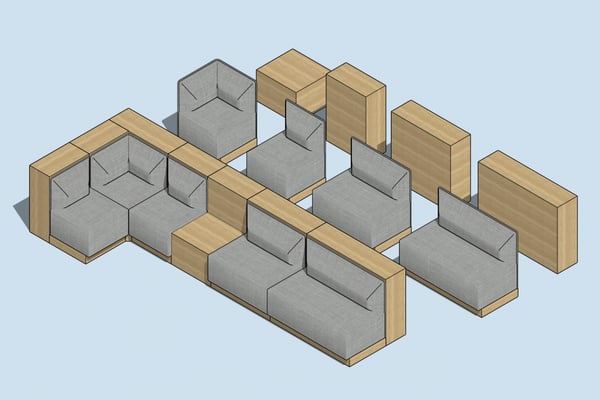
When the furniture designers we represented decided to launch new products, we were required to go out to the market and sell. This work didn’t always reflect what we thought of the product and it’s usability in the marketplace…which got a bit old for us.
In 2016, we took the first steps to create our first product. We were able to brief a Danish designer and manufacturer on how we wanted a sofa to be made, which became the first example of how we create furniture today.
The way we design furniture today is extremely market led. When we got started, there was a lot of residential products being brought to the workplace environment. Contrastingly, we consider specific workplace needs and create designs based around those.
Our process starts with identifying gaps in the market: we notice a certain need or an area of a project that we repeatedly don’t have the right products for. We bring that brief back and collaborate with designers and manufacturers to come up with the new product. That’s what sets us apart from many other firms. We are in no way led by product designers. We are led by the needs of interior designers and clients.
For example, the most recent area we identified is banquet seating. Banquet seating is something that is often designed bespoke for each project. We identified this as an area for a new product. Since we have become very experienced in sofa making and upholstery work, we decided to dip into this category.
To create this new type of sofa, we started drafting in 2D first, agreeing on certain dimensions and concepts. This was then further developed as a 3D model that was eventually built at our workshop in Denmark.
After we create a prototype, we go back to the drawing board to refine the 3D model and finalize the piece—working out the final details such as stitching and leg position. This is the process we used for our new product, BANK, which we debuted at Clerkenwell Design Week this year.
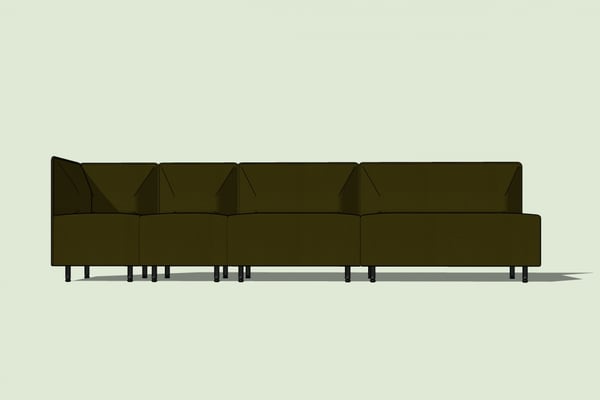
My first encounter with the product was in 2007 selling furniture for a Danish manufacturer. I came across the software through an architect. I was quite excited about it so I started promoting the tool among furniture dealers as a potential tool they could configure our products in.
When I moved to London in 2009, one of the first things I did was to upload our models to 3D Warehouse and start using the platform as an integral part of our selling process. The user friendly aspect of 3D Warehouse and SketchUp Pro itself enabled me to convert all of our DWGs into SKP files and make them more publicly available.
We quickly found that we were gaining a huge following and considerable number of downloads on these products. Ten years later we are still using the platform to upload and share our models.
SketchUp is a tool that we use in three different categories of our business: product design, configuration, and interior design.
We work with many product designers. At the moment, we are working with one designer who develops his designs in SketchUp, Peter Barreth. Trained as an upholsterer and sofa builder, he is a self-taught user of the product. of SketchUp is a tool that he has found convenient and fast to work with.
The Private Sofa was one of the first solutions created under the Icons of Denmark brand by Peter. That product was based on a few very basic principles about comfort, seat height and flexibility of sizing. The process started with 2D drafting. 3D models were created in SketchUp from those initial ideas. Once the first prototype was built in Denmark, we sent it to our showroom in London.
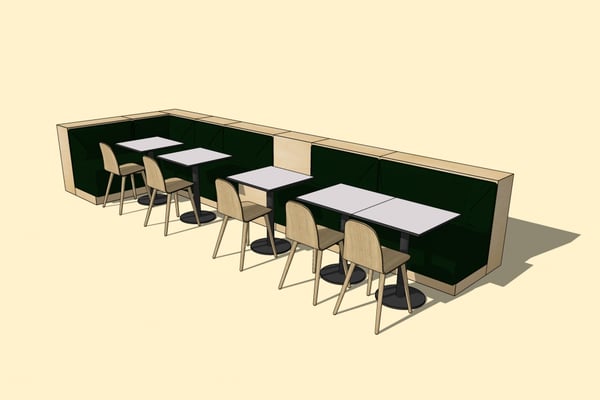
We used that prototype to get market feedback and understand what else needed to be done to refine the function and form before we brought it to market. It was almost a year later that The Private Sofa was actually born as a complete product from our research and development with London’s commercial interior design community.
Most of our product designs are available in various sizes and finishes that can be configured to a client’s specific project.
When we started selling meeting tables for example, we realised it’s an advantage to allow clients to choose their own size. We can visualize and configure the tables from our existing design to match the clients’ needs exactly. This is where we use SketchUp everyday. Our ten-person sales team all use the product.
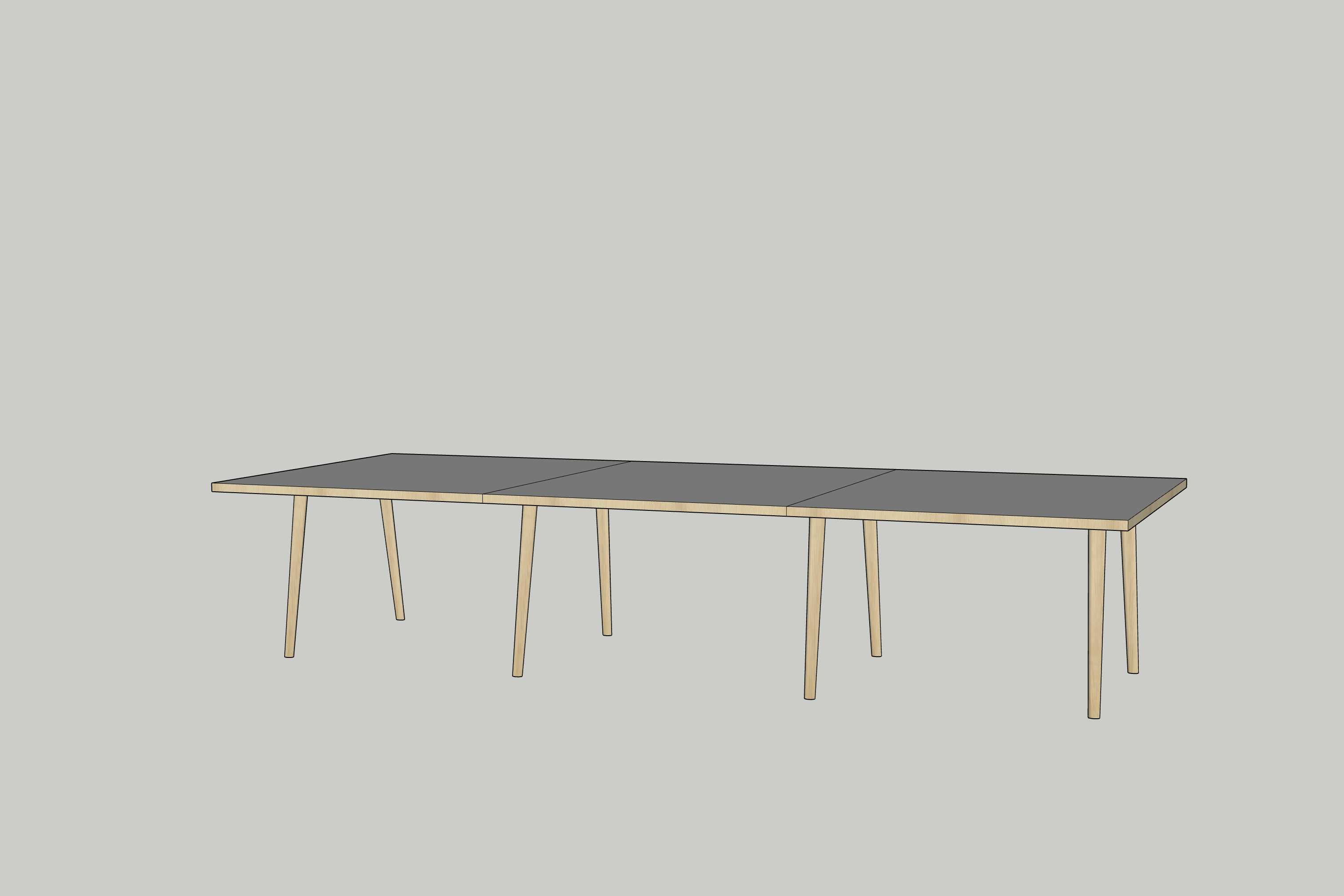
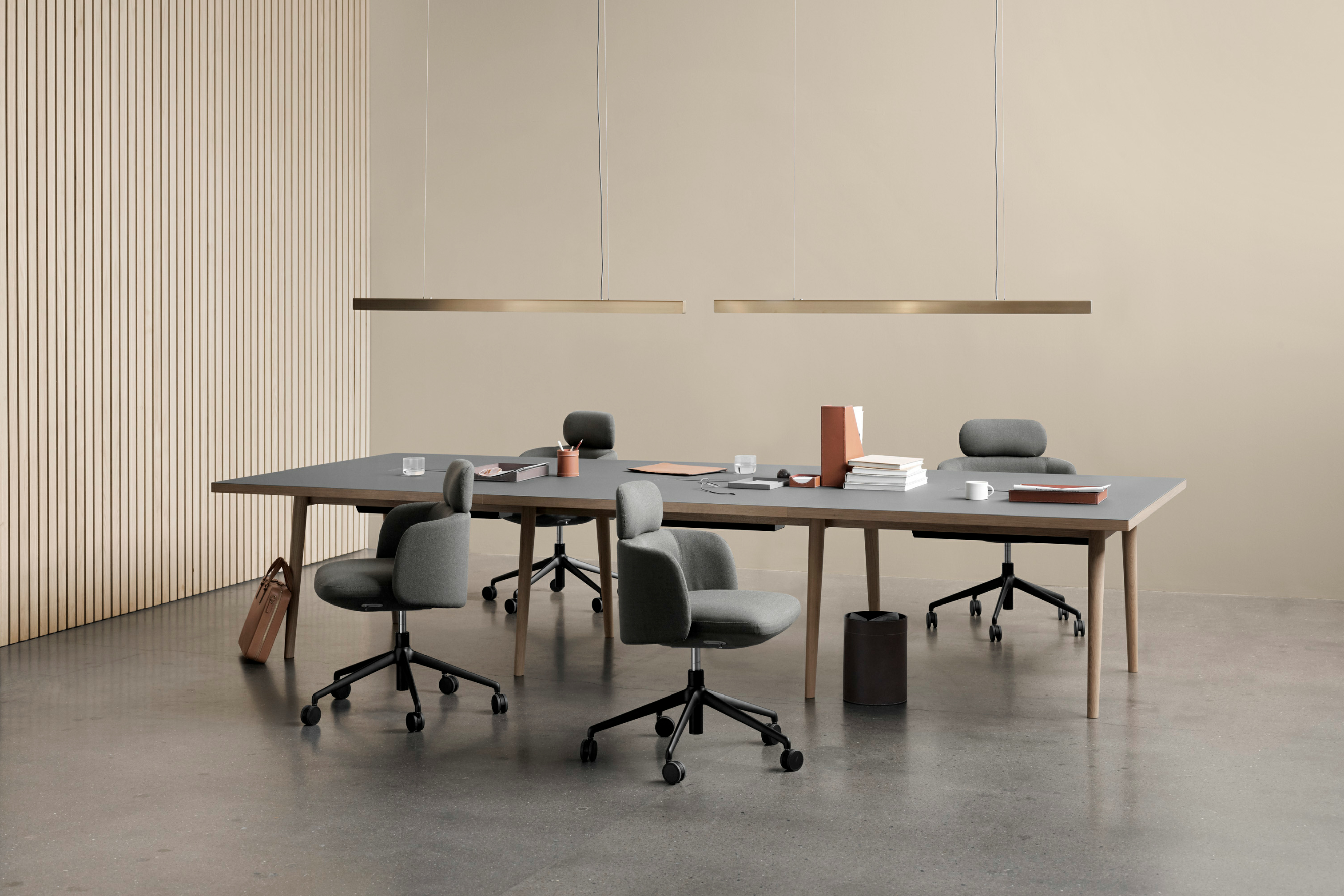
The Forum Table series comes in a variety of table top sizes and colours for the frame and edge.
Since our products can be made to size, we communicate details such as positioning of the legs, the split of tops in a table and the integration of power. If the client wants a specific edge detail, we can visualize that. That has to be visualized quickly for us to get the commitment from our clients and so that we’re all in sync. Our table Forum, for example, has a fairly simple geometry which lends itself to fast customisation in the product. We can redraw these tabletops very easily to fit the customer’s sizing.
We send those drawings back to our producers in Denmark when we are placing the orders. This allows us to sync very quickly with the producers and manufacturers before an order gets placed. That’s actually where we find the biggest value of SketchUp for our business.
We’re very often being invited to pitch our products in cooperation with an architect. Similarly, sometimes we collaborate when the architect needs some inspiration for a certain setup and that often requires a fast turnaround time.
Here, SketchUp allows us to play a part in the designer’s work by not just pitching a sofa, but actually pitching a full configuration of our furniture and visualizing it together with our collaborators’ proposals.
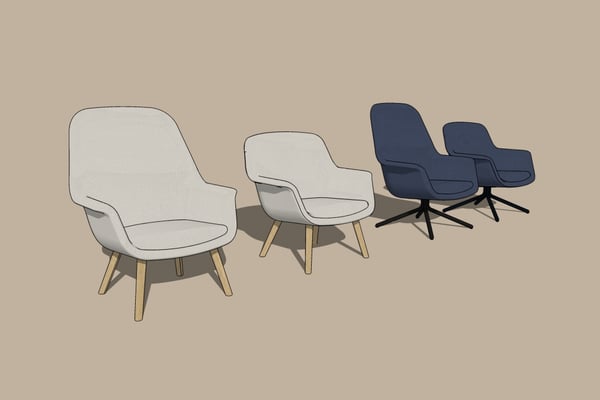
In this instance, we would be taking a brief from an interior designer or architect, suggesting some ideas for the space with our products, and preparing a proposal for the space’s layout. This doesn’t just show our individual products but shows how the products will work in situ on a larger scale.
When it comes to interior design, I think that’s where some of our products really come into their own. For example the EC1 sofa is a modular sofa. You can play with the different pieces of this product, changing them around based on the space that you’re in.
And this is just as important to us as the previous two ways I’ve mentioned we use the product. You want the product in a certain size but you also want it in a certain shape and positioning. I think that’s why the EC1 has proven to be one of our most popular products on 3D Warehouse.
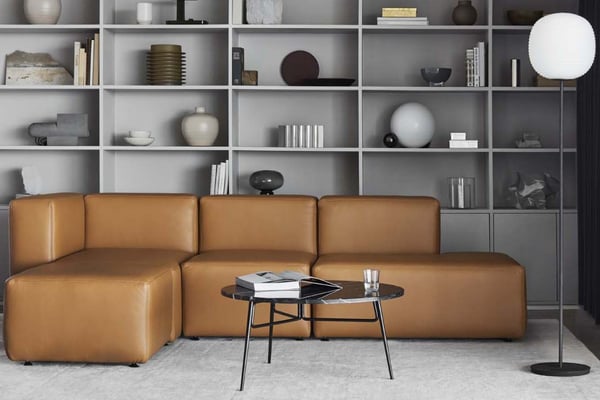
Aside from our sofa line, our other product designers work in SolidWorks. Regardless of the product designers’ workflow, this all feeds into DWG files, which makes it possible for us to work off of a format that we can read and make sense of quickly.
That’s again where SketchUp becomes the common ground. We always ask our product designers who are working in SolidWorks to give us a DWG model. We can then work to create SketchUp models for sharing via 3D Warehouse or use ourselves when we configure or use the products in situ.
For exporting, it’s extremely handy for us that we can instantly create DWGs either as 2D or 3D files of the products that we design from scratch. SketchUp provides us with a compatibility advantage across all of the stakeholders we work with.
About Icons of Denmark
Since their foundation in 2009, Icons of Denmark have become known as the London home of Danish Design for commercial interiors. Committed to bringing the very best of Danish design to the commercial interiors market in the UK and beyond, Jesper and the Icons of Denmark team work closely with a circle of talented designers and craftsmen who hold a deep fascination for refined beauty, natural materials and functional design that the Danes pride themselves upon.
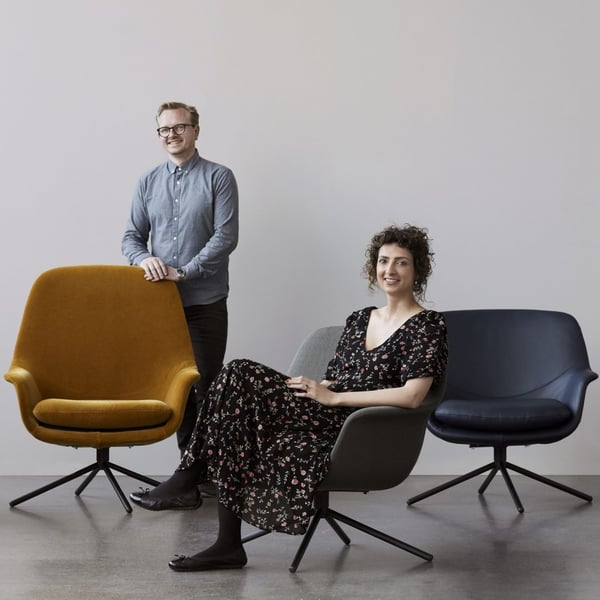
In this article, we will take a look at the major new features in the first update of V-Ray Next for SketchUp, including tips and tricks.
V-Ray is one of the most popular and widely used rendering engines fully integrated with SketchUp with one of the most anticipated updates.
Here, we will talk about what you can do, as a 3ds Max user, to make SketchUp more suitable for your needs and the workflow you are used to.
We'll send you useful articles, notifications for competitions & courses, and job ads for AEC professionals.